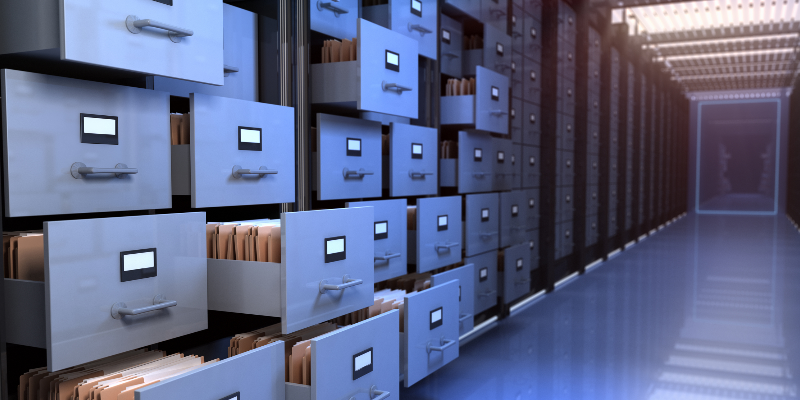SAP S/4HANA: what happens to legacy data?
SAP S/4HANA will turbocharge IT infrastructures. But the migration to SAP S/4 HANA is a complicated and demanding project. This is especially true when companies add components and amass historical data. This is the reason why IT managers turn to a professional partner – especially for the historization of the legacy data. With application retirement services you can be sure that your IT is transformed securely and responsibly to SAP S/4HANA. You can find out more about this in the whitepaper.
Today’s companies face many challenges. This includes, for example, the uncertainties surrounding Brexit, disruption due to digitalization and the energy transition, the scarcity of skilled employees and the necessity of modernizing inefficient processes and the whole IT. In order to master these challenges, many companies are currently discussing switching to SAP S/4HANA . IT managers know that any migration will be a challenging task – especially if it involves ERP software, the heartbeat of a company.
According to a study by market research organization PAC, two thirds of German companies expect that a migration to SAP S/4HANA will accelerate their processes and data analysis. More than half want to modernize of the applications and infrastructure. Decisions makers often fear, that numerous modifications can make the migration to SAP S/4HANA a complex task.
SAP will stop supporting legacy versions of their ERP solutions by 2025. At this date the migration of old SAP versions to SAP S/4HANA will be unavoidable. On the positive side the move to SAP/4HANA will bring companies more advantages than any comparable update ever. This will allow new business models, more efficient processes, cost-efficiency and greater productivity.
The migration to SAP S/4 HANA is challenging. This is especially true when data have to be transferred from various legacy systems. A strong partner can help you to easily overcome all the obstacles.
Taking on the legacy data
A particular problem with the migration to SAP S/4HANA is how to deal with legacy data. All large companies have a history, and are faced with the question as to what happens to the legacy data when they opt for the new version of SAP S/4HANA. Because SAP S/4HANA nrings so many changes compared with its predecessors, a simple 1 to 1 takeover is not possible. Data migration is, in fact, the biggest problem on the way to SAP S/4HANA, both in terms of the complexity and the time involved.
T-Systems offers a cost-efficient solution
The T-Systems team for Managed Application Retirement Services (M.A.R.S.) is very familiar with this problem. They use the method of historization of the legacy data, which makes it possible to clear up and modernize complex system landscapes. A standard, methodical, project approach with back-up services and a highly secure cloud operating system allow major cost savings and long-term data availability.
For this historization legacy data is cleared and the old system decommissioned. This is not an actual migration. With the M.A.R.S. services, a minimum of data is taken over and the rest of the files historized in compliance with applicable regulations and laws.
When companies use the Managed Application Retirement Services, data and documents are transferred to a high-security, dedicated cloud environment scaled to the respective company requirements. In the new environment all of the individual compliance requirements can be easily implemented. Legal regulations such as GDPR and GoBD conformity are fulfilled automatically.
Migration to SAP S/4HANA often means that many old applications reach the end of their life cycle and become obsolete. Historization ensures that the data in these legacy applications are collected and transferred to a new, future-proof platform that is independent of the source system technology.
The central platform can compile reports, link objects and prepare individual evaluations. The user-friendly interface offers easy access via a secure connection, and guarantees that the data cannot be tampered with.
Projects in detail
Tibor Kosche, Vice President and Managed Application Retirement Services (M.A.R.S.) of T-SYSTEMS DATA MIGRATION CONSULTING AG, explains: “Numerous customer projects showed that they can be implemented in around just three months and without complications while offering a high return-on-investment (ROI).“
The introduction to the historization of the legacy data project in a proof of concept takes around three months. The data of an old system are historized, either on-premises or in the Open Telekom Cloud. All the data are transferred and then reports are compiled. Technical tests ensure that everything is working perfectly. Then comes the assessment of the results and the user training.
The historization of the legacy data means that you can completely shut down your old systems after migration, which has further cost advantages. The shutdown is normally 60 to 80 percent cheaper than simply allowing the old systems to continue running. Leaving the old systems in the basement may appear to be a good idea at first glance, but the resulting costs due to maintenance agreements, tied-up personnel, security and compliance risks are enormous. The transfer of the data from old systems to a historization platform does involve costs, but the return-on-investment is ensured within just a few months due to the savings achieved. Moreover, all of the data are centrally available and easily accessible on this platform. With this service, you too can achieve a hassle-free migration to SAP S/4HANA!
Source picture: iStock /Petrovich9
[plista]





